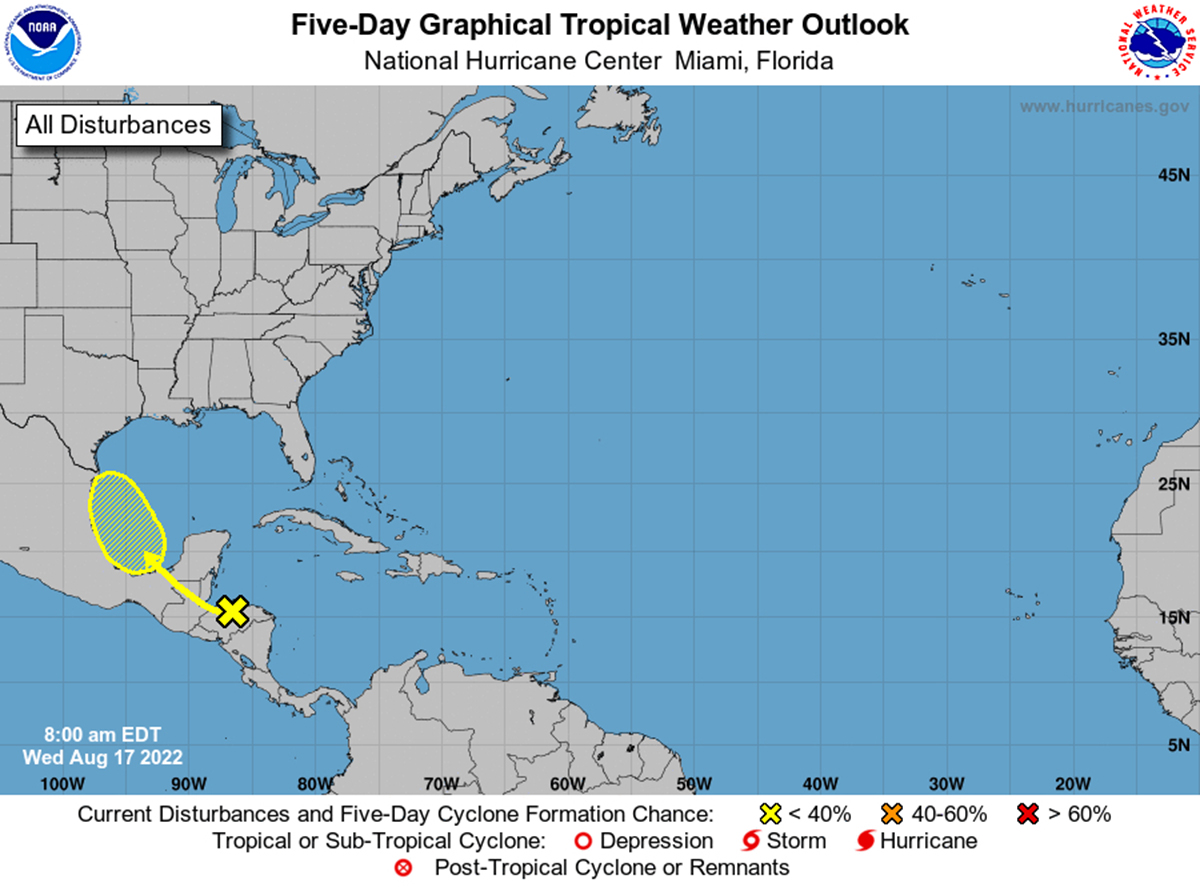
A tropical wave being monitored by the National Hurricane Center now has a 30% possibility of development over the next five days that could bring more rain to the Rio Grande Valley.
As of Wednesday, the tropical wave over the northwestern Caribbean Sea is forecast to move across Central America over the next couple of day and emerge over the Bay of Campeche, the NHC reports.
There’s a possibility that an area of low pressure could form Friday with some gradual development of this system possible, as it moves northwestward over the southwestern Gulf of Mexico through the weekend, according to the NHC.
Formation chances through 48 hours is at 10 % but increases to 30% through the next five days.
As of Wednesday, the rain chances for Saturday and Sunday are at 40% but chances could increase if there is further development of the wave.
Weather forecasters have said any rain making its way the Valley is beneficial considering the dry conditions the area has experienced over the past few months.
The latest beneficial rain the Valley had occurred over the weekend where areas reported anywhere from 2 to 4 inches if not more.
Many cities remain under water restrictions plans which means residents can only water their lawns on certain days of the week and during certain hours. Residents and businesses are not allowed to wash/rinse their driveways or sidewalks with water.
According to the Texas Drought Monitor, most of the Valley is in a moderate drought with parts of Starr County in a severe drought. The next drought report is scheduled to be released Thursday.
The tropics have pretty much remained quiet since the start of the 2022 Atlantic hurricane season that began June 1.
Meteorologists with National Oceanic and Atmospheric Administration earlier this month updated its forecast and continued to predict an above-normal 2022 Atlantic hurricane season.
“We’re just getting into the peak months of August through October for hurricane development, and we anticipate that more storms are on the way,” said NOAA Administrator Rick Spinrad, during an Aug. 4 media call.
According to NOAA, there will be 14 to 20 named storms, six to 10 hurricanes, and three to five major hurricanes.
So far, the season has seen three named storms and no hurricanes in the Atlantic Basin.
The hurricane season usually picks up during the months of August, September, and October. The season peaks Sept. 10, according to NOAA.
Hurricane season ends on Nov. 30.



